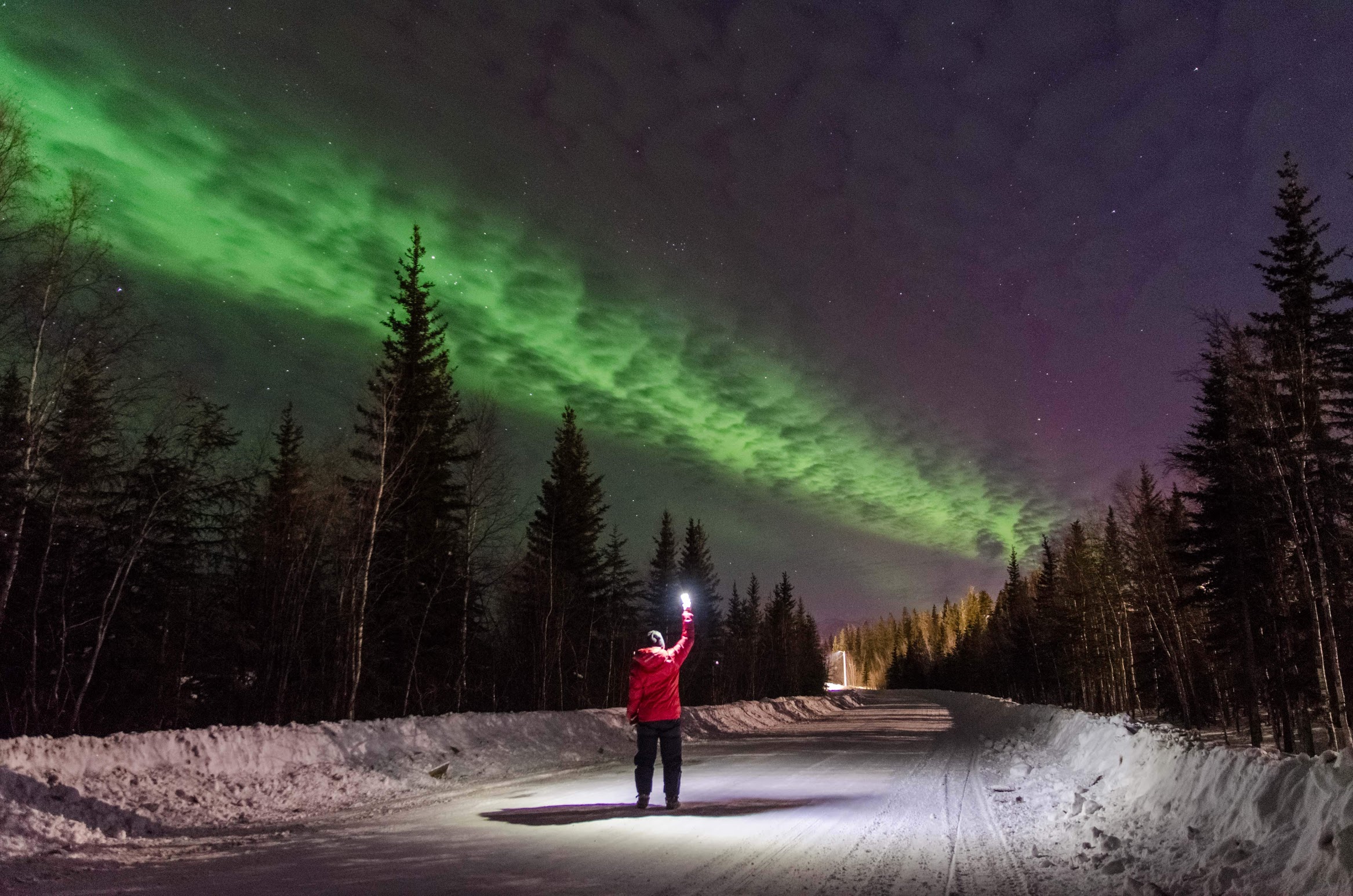All photos by Jean Polfus.
When Jean Polfus ’06 traveled to Canada’s Northwest Territories to study caribou ecology for a PhD in 2012, she didn’t just plan a quick stint to complete her fieldwork. Instead, the alumna—who grew up in northern Wisconsin and studied evolutionary and environmental biology at Dartmouth—moved into the tiny subarctic town of Tulit'a with her husband, Joe Hanlon ’05.
There, north of the 64th parallel, Polfus lived in a community of primarily Sahtu Dene and Metis First Nation residents. Working closely with indigenous groups, she incorporated local knowledge into her research to create more effective and respectful caribou management efforts. After finishing her doctorate with the University of Manitoba in 2016, she stayed for a fellowship focused on community-based communication tools to support sustainable caribou stewardship.
Polfus recently accepted a position with the Canadian federal government working on caribou policy and moved south to Kelowna, British Columbia, with Hanlon and their two young children. Before departing, she hosted an exhibit to display the photos she’d taken during six and a half years in Tulit'a, and donated canvas prints to community organizations.
“I wanted to give back (in a small way) for all the ways I have benefitted from living in Tulit'a, both personally and professionally,” she says. Below, Polfus shares some of her favorite images. The beautiful photos reflect her love for the unique ecosystem and community, while reminding us that Dartmouth alumni truly make an impact around the world—even in tiny northern Canadian towns perched on the permafrost.

Polfus took this photo shortly after she arrived in Tulit'a for the first time. “It remains one of my favorites,” she says. “It seems to truly encompass the feeling of being in the remote community during the short and cold days of winter.”
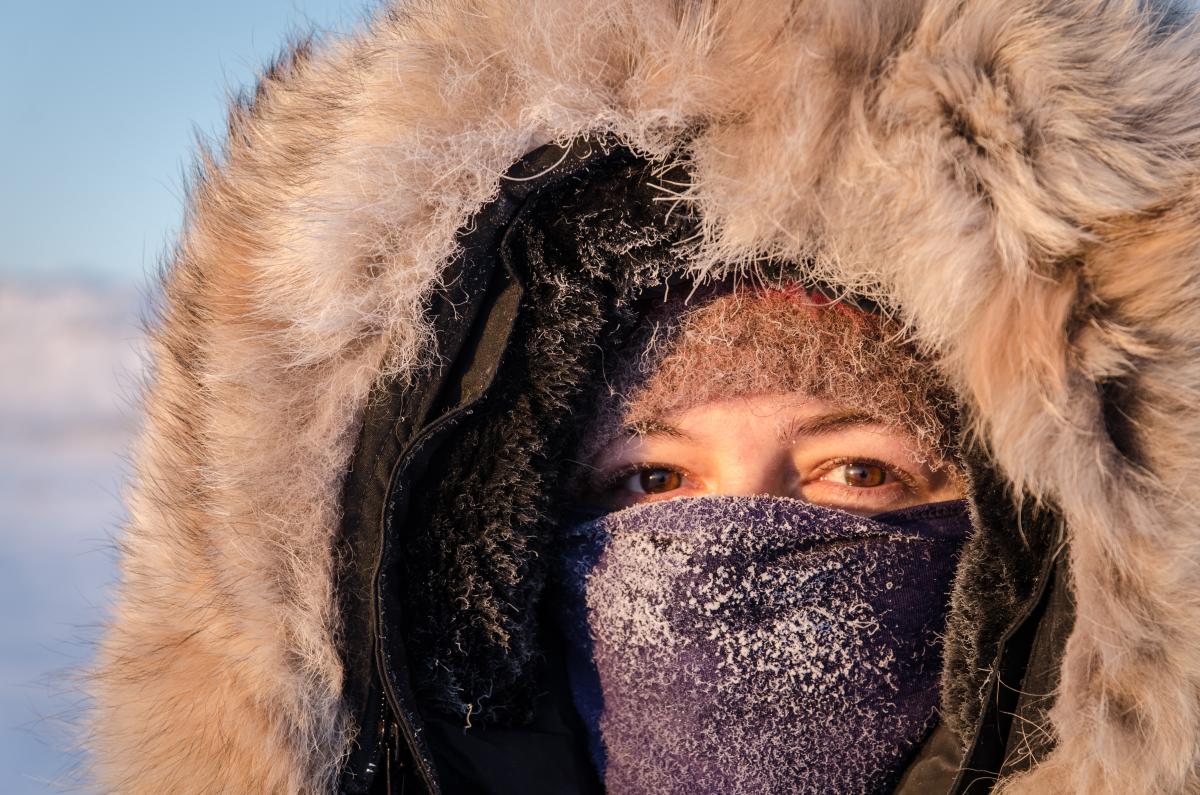
Tulit'a’s long, cold winters typically last from October to May. The mean temperature is -17 degrees Fahrenheit in January, and -40-degree days are not uncommon. “I always tell people that you can always dress warm enough for the weather—you just need the proper gear,” Polfus says. “In Tulit'a there are many expert Dene seamstresses who can make beautiful slippers, mukluks, and beaver mitts that can’t be beat by synthetics for keeping you warm on the coldest days or when traveling by Ski-Doo. I wear a lot of wool and a fur ruff is essential for the cold and windy days.” She took this self-portrait on a bitterly cold morning while walking to work.
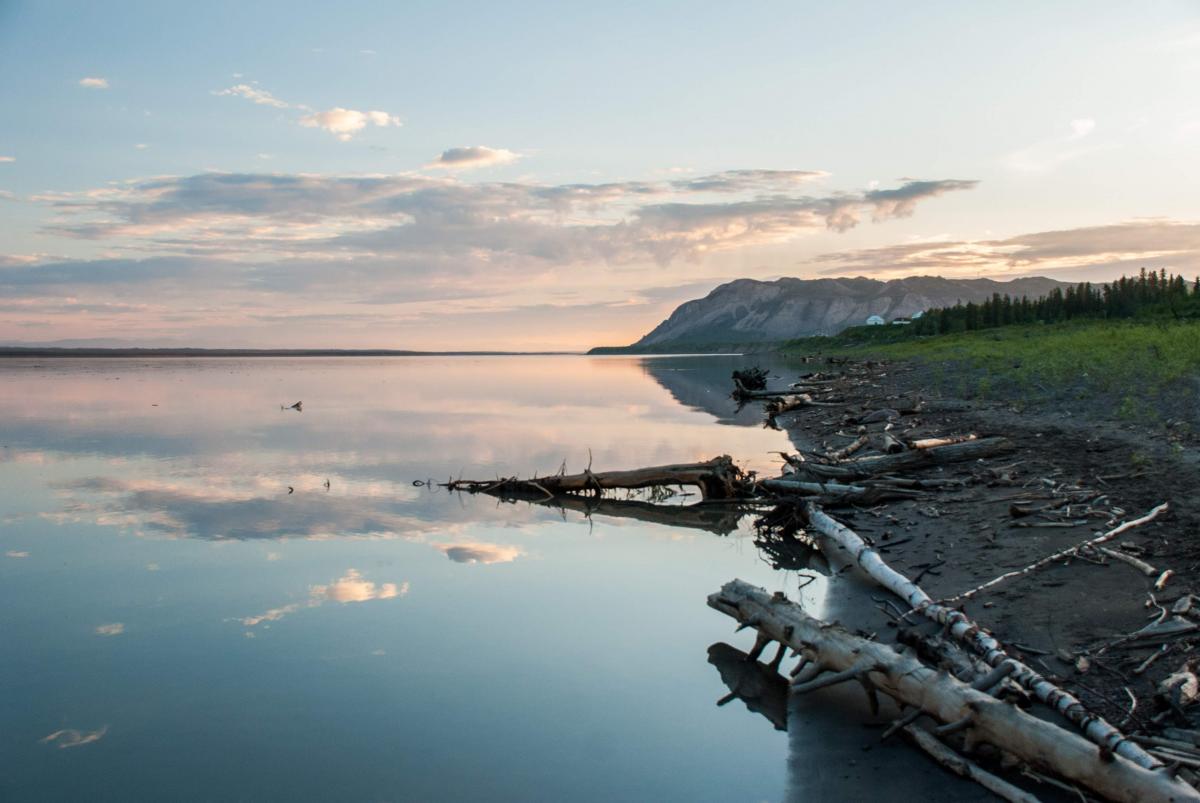 In Dene language, Tulít’a means “where the waters flow together,” as the town sits at the confluence of the Great Bear and Mackenzie Rivers. The Mackenzie River and its tributaries make up the largest watershed in Canada; each second, about 2.6 million gallons of fresh water flow past Tulít’a on their way north to the Arctic Ocean. “What always amazes me is how dynamic the river can be,” Polfus says, “always changing and always surprising. This image was taken at 1 a.m. on the summer solstice. It shows how a river that is 2.5 to 5 kilometers wide can sometimes be extremely calm and peaceful.”
In Dene language, Tulít’a means “where the waters flow together,” as the town sits at the confluence of the Great Bear and Mackenzie Rivers. The Mackenzie River and its tributaries make up the largest watershed in Canada; each second, about 2.6 million gallons of fresh water flow past Tulít’a on their way north to the Arctic Ocean. “What always amazes me is how dynamic the river can be,” Polfus says, “always changing and always surprising. This image was taken at 1 a.m. on the summer solstice. It shows how a river that is 2.5 to 5 kilometers wide can sometimes be extremely calm and peaceful.”
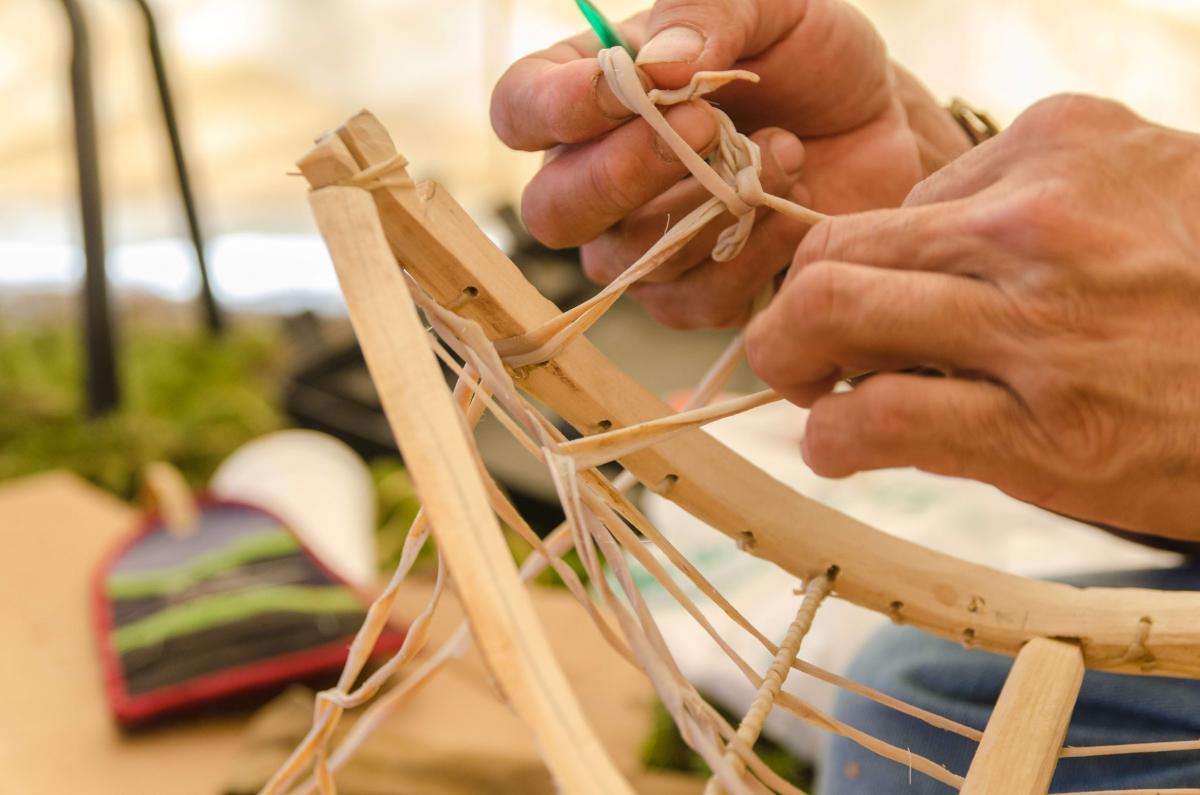 “Dene people have lived in the Sahtu region for millennia,” says Polfus. “The landscape is filled with placenames that connect people to their history and describe important historic events, cultural practices, and relationships between different components of the ecosystem.” In this photo, local Ricky Andrew works on a pair of handmade snowshoes constructed out of spruce wood and caribou hide. “Living in Tulit'a has allowed me to learn more about colonial history and the complex political and cultural context that continues to shape and impact Indigenous people’s lives today,” Polfus says. “I feel very humbled to have the chance to enter the community as a student and to listen to elders speak in their own language. I continue to have so much to learn about the close relationship between people, their language, and the environment.”
“Dene people have lived in the Sahtu region for millennia,” says Polfus. “The landscape is filled with placenames that connect people to their history and describe important historic events, cultural practices, and relationships between different components of the ecosystem.” In this photo, local Ricky Andrew works on a pair of handmade snowshoes constructed out of spruce wood and caribou hide. “Living in Tulit'a has allowed me to learn more about colonial history and the complex political and cultural context that continues to shape and impact Indigenous people’s lives today,” Polfus says. “I feel very humbled to have the chance to enter the community as a student and to listen to elders speak in their own language. I continue to have so much to learn about the close relationship between people, their language, and the environment.”
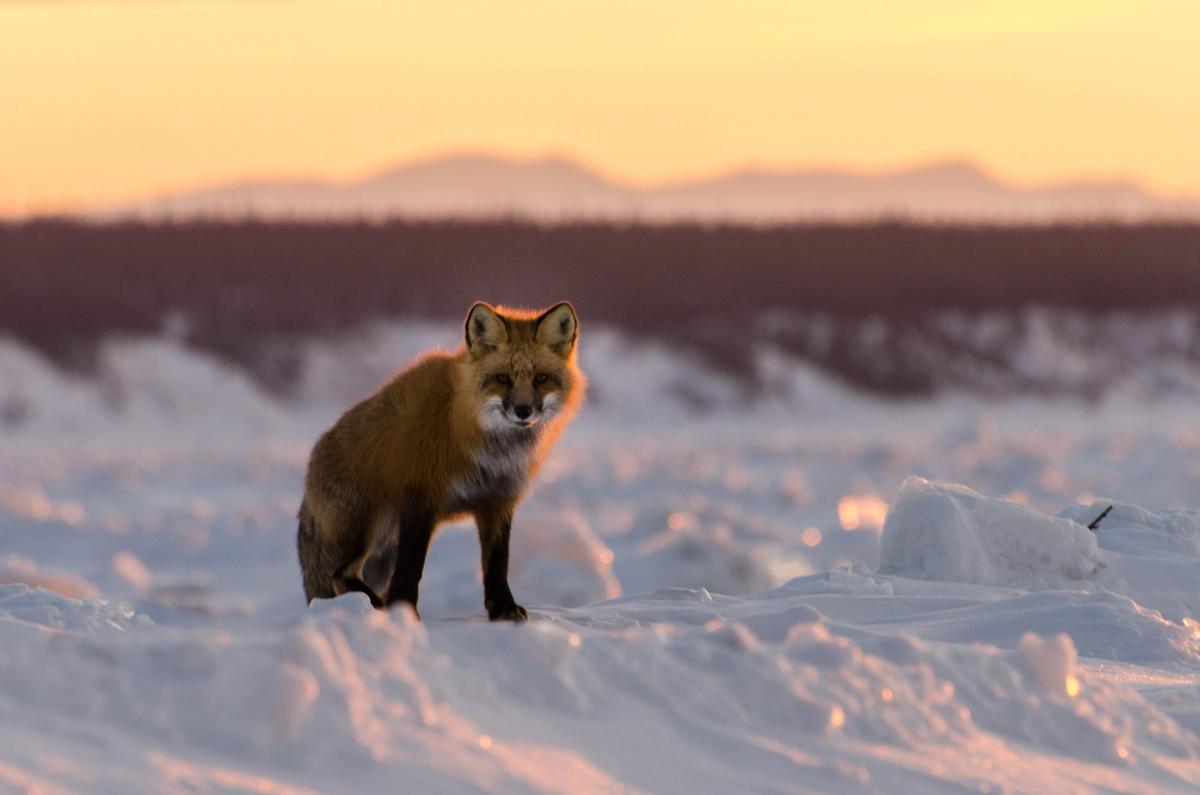 Polfus took this image in late winter as the sun set, casting a glow across the ice. “The boreal forest is extremely vast, and spotting wildlife can be difficult,” she says. “I was lucky to have the opportunity, through my field work, to see wolves, lynx, moose, caribou, and even a wolverine. Dene people maintain an extremely close relationship with the land and wildlife, and many people rely on hunting or trapping.” Foxes often wander the streets of Tulit'a, she adds—sometimes even posing for photographs.
Polfus took this image in late winter as the sun set, casting a glow across the ice. “The boreal forest is extremely vast, and spotting wildlife can be difficult,” she says. “I was lucky to have the opportunity, through my field work, to see wolves, lynx, moose, caribou, and even a wolverine. Dene people maintain an extremely close relationship with the land and wildlife, and many people rely on hunting or trapping.” Foxes often wander the streets of Tulit'a, she adds—sometimes even posing for photographs.
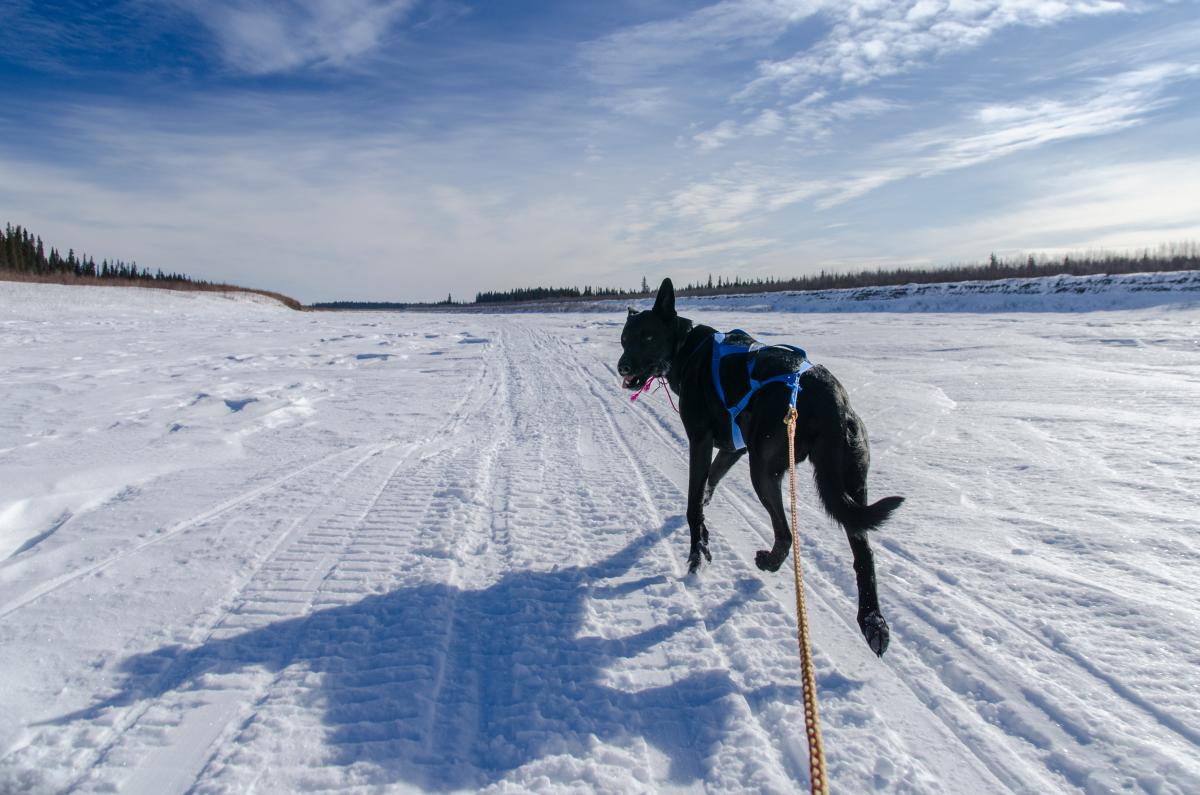 Polfus grew up cross country skiing and was on the women’s cross country ski team at Dartmouth. She also loves dogs. “Sometimes I think that skijoring is what I was born to do,” she says. “We have a black husky named Stella who is a natural sled dog—when you put the harness on her she is all business and does an amazing job pulling. I am able to ski right from my front door! Dappled sunlight on snow with skis swishing and dog paws padding softly along a trail are some of my favorite winter moments.” Here, Stella runs over a snowmobile track on the Mackenzie River across from Tulit'a.
Polfus grew up cross country skiing and was on the women’s cross country ski team at Dartmouth. She also loves dogs. “Sometimes I think that skijoring is what I was born to do,” she says. “We have a black husky named Stella who is a natural sled dog—when you put the harness on her she is all business and does an amazing job pulling. I am able to ski right from my front door! Dappled sunlight on snow with skis swishing and dog paws padding softly along a trail are some of my favorite winter moments.” Here, Stella runs over a snowmobile track on the Mackenzie River across from Tulit'a.
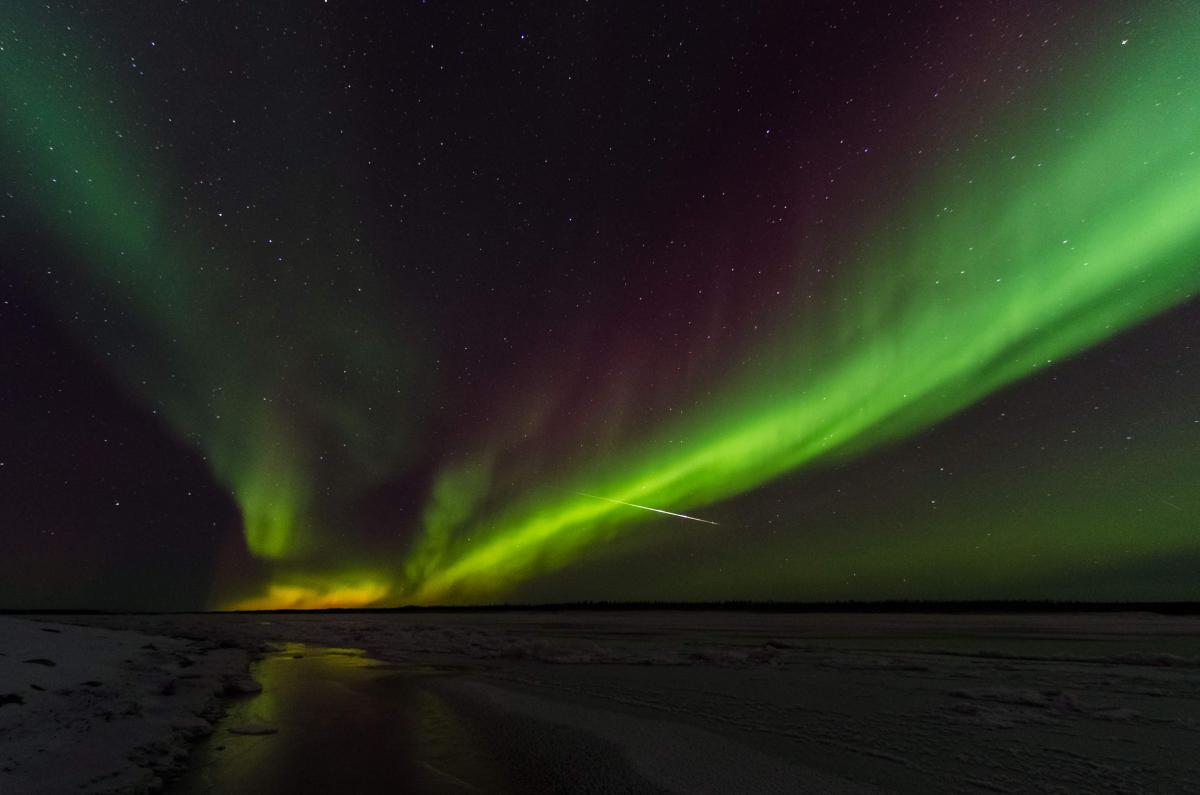
The alumna got into photography after arriving in Tulit'a in order to document her experiences and share them with friends and family. “I love taking photographs of the northern lights because no two nights are ever the same,” she says. “This photograph is one of my favorites because, during the editing process, I noticed that I had caught a shooting star crossing the aurora band. While the photographs of aurora can be breathtaking, the actual experience of being out on the land, in the cold, in the dark, while taking in the whole sky, is something that we can never reproduce through images.”
For more of Polfus’ striking photos, watch this slideshow. To learn more about her research and artwork, visit her website.

